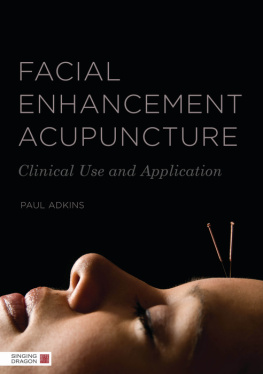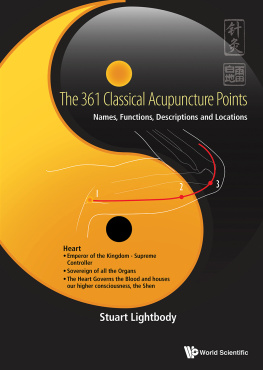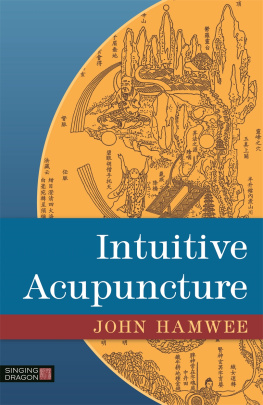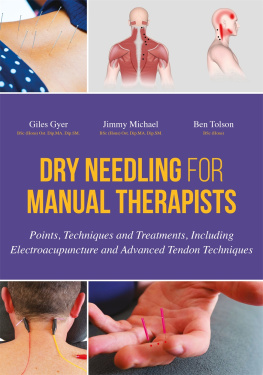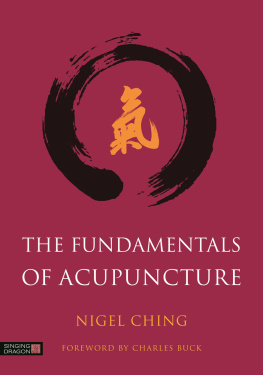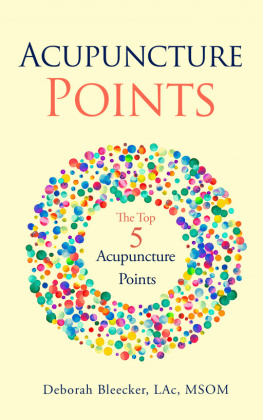ACKNOWLEDGEMENTS
This book has been made possible by the love, support and encouragement of so many people.
First, I want to acknowledge the help and support of my partner Stacey George. Without her editorial assistance, design work and expertise in research, this book would not have come together on time, if at all. She is an accomplished Feng Shui practitioner and Chinese astrologist and I am sure has many of her own books to write.
Also, I would like to thank Julie George for her role as our model for the Step-by-Step Guide. Her patience was greatly appreciated. These photographs were all taken by a very good friend, Roger Dutton. His dedication and skill with the camera is second to none.
I would also like to extend thanks to my three great children who I am so proud of, and my fantastic parents who have always been there for me and encouraged me to set my sights high.
I would like to acknowledge and thank all of the staff and my fellow students who attended the College of Traditional Acupuncture in Leamington Spa, England. I have been honoured to have been taught by some of the finest minds in Five Element Acupuncture and without their support and encouragement I would not be publishing this book today.
My appreciation goes to my demonstration patients and the students who undertake my courses. You continue to inspire me with your enthusiasm for Facial Enhancement Acupuncture, which vastly helps the continual progression of the protocol.
My thanks go to Jessica Kingsley Publishers for their faith in me and their help with this publication.
Thank you, everyone, for your assistance, and I hope this book justifies your support.
Figures 1.1 and 3.13.7 have been purchased and adapted from iStockphoto.com in accordance with their Standard Licence.
Figure 1.1 iStockphoto.com/LindaMarieB.
Figures 3.13.6 iStockphoto.com/ariwasabi.
Figure 3.7 iStockphoto.com/Gangliulo.
Figures 4.15.14 are reproduced with kind permission from Roger Dutton.
All photographs have been edited and enhanced by Stacey George.
First published in 2014
by Singing Dragon
an imprint of Jessica Kingsley Publishers
73 Collier Street
London N1 9BE, UK
and
400 Market Street, Suite 400
Philadelphia, PA 19106, USA
www.singingdragon.com
Copyright Paul Adkins 2014
Photography copyright Roger Dutton 2014
Front cover image source: Shutterstock. The cover image is for illustrative purposes only, and any person featuring is a model.
All rights reserved. No part of this publication may be reproduced in any material form (including photocopying or storing it in any medium by electronic means and whether or not transiently or incidentally to some other use of this publication) without the written permission of the copyright owner except in accordance with the provisions of the Copyright, Designs and Patents Act 1988 or under the terms of a licence issued by the Copyright Licensing Agency Ltd, Saffron House, 610 Kirby Street, London EC1N 8TS. Applications for the copyright owners written permission to reproduce any part of this publication should be addressed to the publisher.
Warning: The doing of an unauthorised act in relation to a copyright work may result in both a civil claim for damages and criminal prosecution.
Library of Congress Cataloging in Publication Data
A CIP catalog record for this book is available from the Library of Congress
British Library Cataloguing in Publication Data
A CIP catalogue record for this book is available from the British Library
ISBN 978 1 84819 129 7
eISBN 978 0 85701 103 9
DISCLAIMER
The techniques and methods described in this publication are based on the authors knowledge and personal experience and no guarantees can be made as to their accuracy or success. The author can take no responsibility whatsoever for the results of any treatment that someone decides to carry out after reading this publication. In no circumstances should the information contained in this book be used as a guide for medical practice or purpose. If a medical condition is suspected, then you are advised to consult a medical practitioner, particularly if you are on orthodox medication.
GLOSSARY
Acupuncture: An ancient Chinese treatment/medical technique based on the principle that there are pathways called meridians relating to internal organs and systems, running throughout the body. Vital energy or Qi flows along the meridian lines and there are points along these channels that can be stimulated by the insertion of fine sterile, disposable needles to clear blockages. Points are selected for the treatment of various disorders or to alleviate pain.
Aggressive Energy Drain: Treatment protocol used to clear an accumulation of unhealthy Qi energy from a patients system.
Anaesthesia: Loss of bodily sensation, specifically loss of the feeling of pain.
Analgesia: An inability to feel pain.
Ashi Point: Tender spots that can be used as acupuncture points.
Auricular: Relating to the ears.
Blood: Dense fluid that has been affected by Qi energy, flowing both through the vessels and the meridians, nourishing Body, Mind and Spirit.
Body, Mind and Spirit: If one of these three connecting factors is out of balance, it can affect the others.
Channels: See Meridians.
Cun Measurement: A Chinese measurement denoted by the width of the knuckle of the thumb or the space in between the distal and proximal inter-phalangeal joints of the third finger. 1.5 cun is measured by the width of first and second fingers together. All four fingers together demarcates 3 cun.
DE-Qi: The sensation felt when stimulating an acupuncture point.
Evens Technique: Method where the acupuncture needle is inserted with no stimulation.
Extra Point: Extraordinary acupuncture point that is not attributed to a particular channel.
He-Sea Point: Connecting points found at the elbows and knees.
Intradermal Needle: Small 3mm or 6mm acupuncture needle used for fine work.
Jing: The Essence. Kidney Jing , derived from both pre- and post-Heaven Essence, is related to growth and maturation.
Meridians: Channels of energy that run throughout the body.
Qi: Vital energy believed to circulate around the body in currents.
Shen: The Spirit. Heart Shen governs the emotions.
Shu-Stream Point: Where Qi pours through the channel.
Source Point: A high-concentration point that provides access to the main meridian system.
TCM: Traditional Chinese Medicine.
Tonification: Stimulation of the acupuncture point by turning the needle clockwise to boost it.
Xi-Cleft Point: Where Qi and Blood gather.
Ying Spring Point: Acupuncture point where the Qi trickles down the meridian.
FACIAL
ENHANCEMENT
ACUPUNCTURE
PREFACE
I first started my journey into acupuncture in the year 2000 at the age of 40, quite late compared to many other practitioners. My entire working life was previously involved in sales and marketing, of one type or another, so studying acupuncture was a whole new departure for me.
I studied Classical Five Element Acupuncture at the CTA College of Traditional Acupuncture in Leamington Spa, England, and gained an honours degree as well as my licence to practise. When I was first looking at acupuncture as a subject to study, I was not aware of the differences between styles and it was purely through luck and good fortune that I picked this form. I was immediately drawn to the Chinese Five Elements; I could instantly see how everything about them made such good sense, both from an acupuncture point of view and also in daily living.
From my early days in practice, I was always interested in facial and/or cosmetic acupuncture and the possibilities that it can offer for improvements to the skins structure and facial suppleness. I started by experimenting with different facial points and looking at the results that could be achieved by their application. I was amazed at how, with continuous use of some points, the facial muscles could be trained, very similar to having a work-out in a gym. This change in the face remained for quite some time after treatment. The target was then to try to maintain these results long term.
Next page
